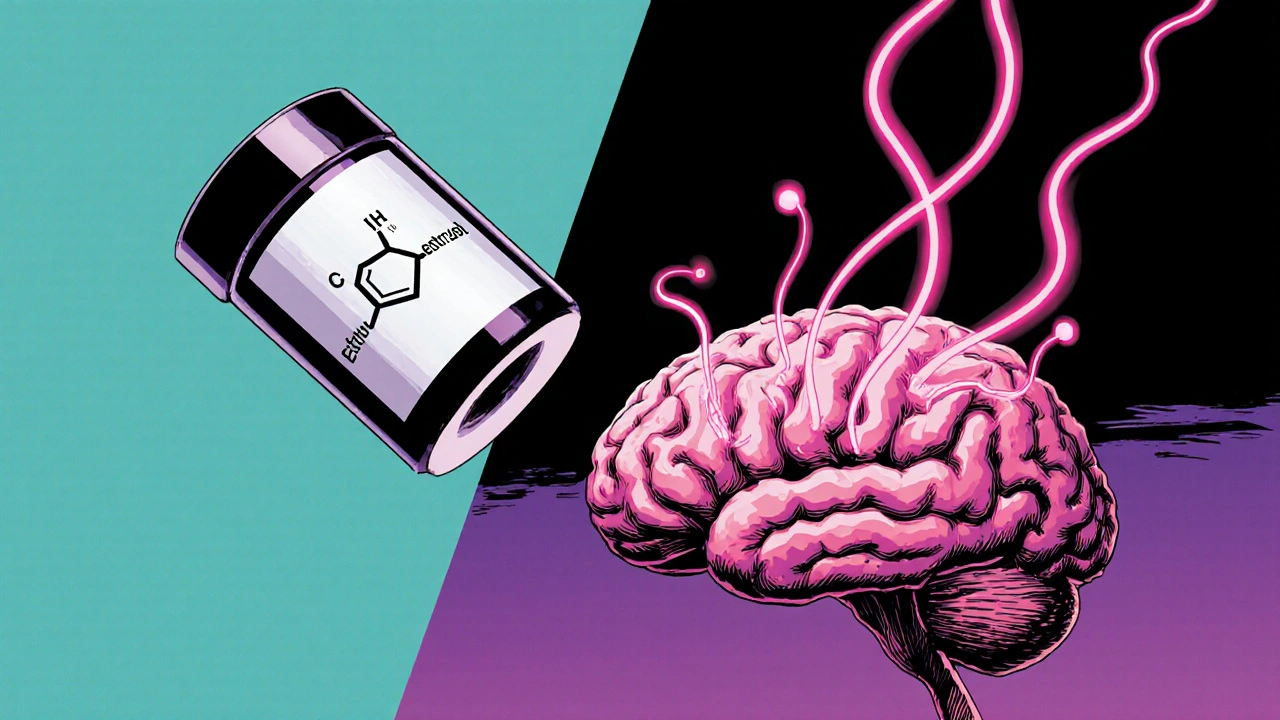
Explore how the synthetic estrogen ethinylestradiol BP influences mood and mental health, uncover risk factors, and learn practical steps to manage side effects.
When dealing with mood changes, fluctuations in emotional state that can range from mild irritability to intense swings. Also known as emotional volatility, mood changes often pop up during hormonal shifts, medication side effects, or stress events. They’re not random; they tie directly to specific triggers like PMS, pre‑menstrual syndrome, a monthly pattern of physical and emotional symptoms, the dizziness that some drugs cause, and the hormonal adjustments involved in hormone therapy, a treatment aimed at balancing estrogen and progesterone levels. Even conditions like PTSD can set the stage for sudden mood swings. Recognizing these links helps you move from guessing to taking concrete steps.
First, dizziness, often listed as a side effect of antihypertensives, antidepressants, or even allergy meds, can make you feel light‑headed and irritable. When your brain isn’t getting steady blood flow, emotional regulation takes a hit. Second, PMS brings a cocktail of hormone spikes—especially estrogen and progesterone—that mess with neurotransmitters like serotonin. The result? Mood swings that feel out of your control. Third, hormone therapy, whether it’s estradiol patches for menopause or birth‑control pills, reshapes the hormonal landscape, sometimes smoothing out mood swings, other times prompting new ones if the dosage isn’t right. Finally, PTSD can trigger flashbacks or hyper‑arousal, both of which can cause abrupt mood shifts. Understanding these four pillars—dizziness, PMS, hormone therapy, and PTSD—gives you a clear map of why your feelings might be on a roller‑coaster.
How do you break the cycle? Start by tracking symptoms. A simple journal noting when you feel dizzy, when your period begins, or when you’ve taken a new medication can reveal patterns. If dizziness is the culprit, talk to your prescriber about dosage adjustments or alternative drugs. For PMS‑related changes, lifestyle tweaks—like reducing caffeine, adding magnesium, or trying regular exercise—often soften the ride. Hormone therapy should be personalized; a clinician can fine‑tune the dose to match your body’s response. And if PTSD is in the mix, evidence‑based therapies such as CBT or EMDR can reduce the intensity of mood swings. By targeting the root cause, you move from reacting to symptoms to proactively stabilizing your emotional baseline.
Below you’ll find a curated collection of articles that dive deeper into each of these triggers—dry mouth during cancer treatment, drug comparisons for hypertension, allergy‑safe home tips, and more. Whether you’re looking for practical self‑care ideas, medication guidance, or ways to improve sleep during PMS, the posts ahead give you actionable insights to keep mood changes in check and regain a steadier sense of well‑being.

Explore how the synthetic estrogen ethinylestradiol BP influences mood and mental health, uncover risk factors, and learn practical steps to manage side effects.